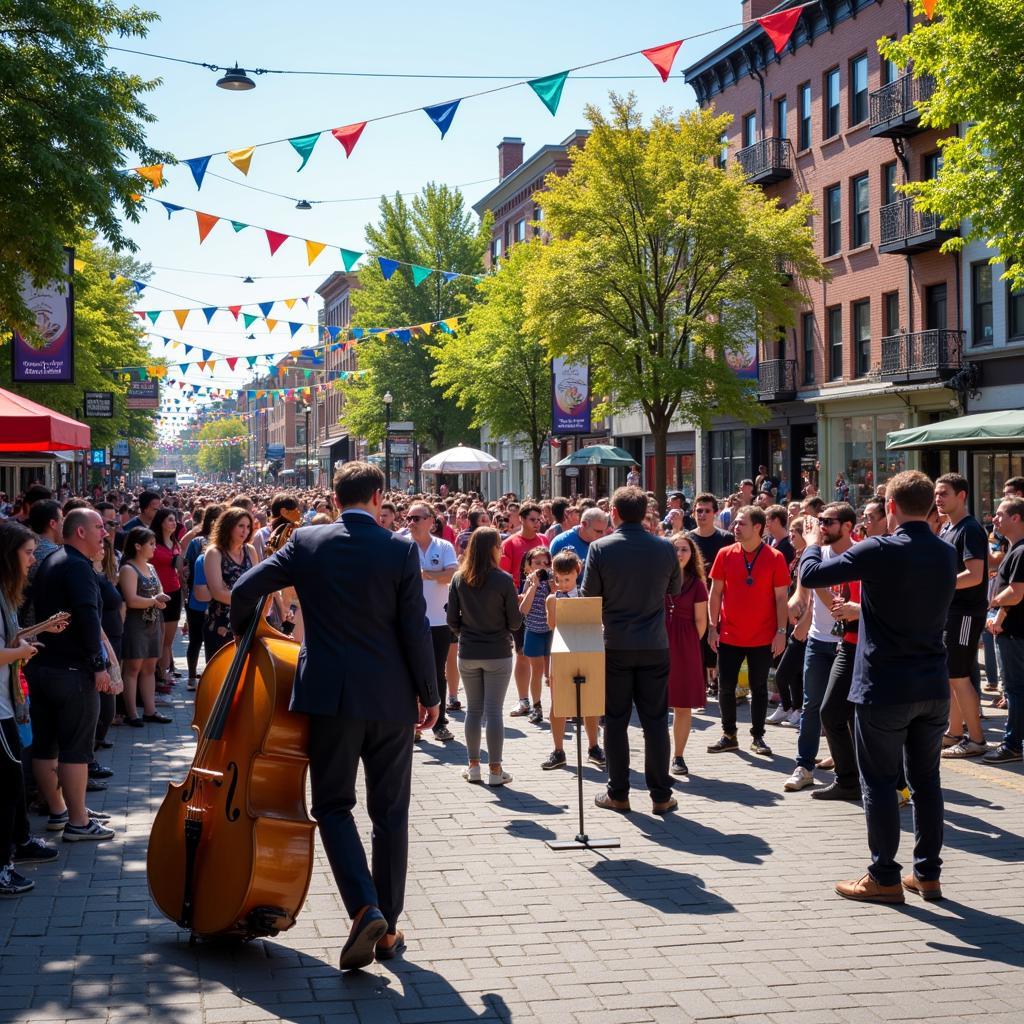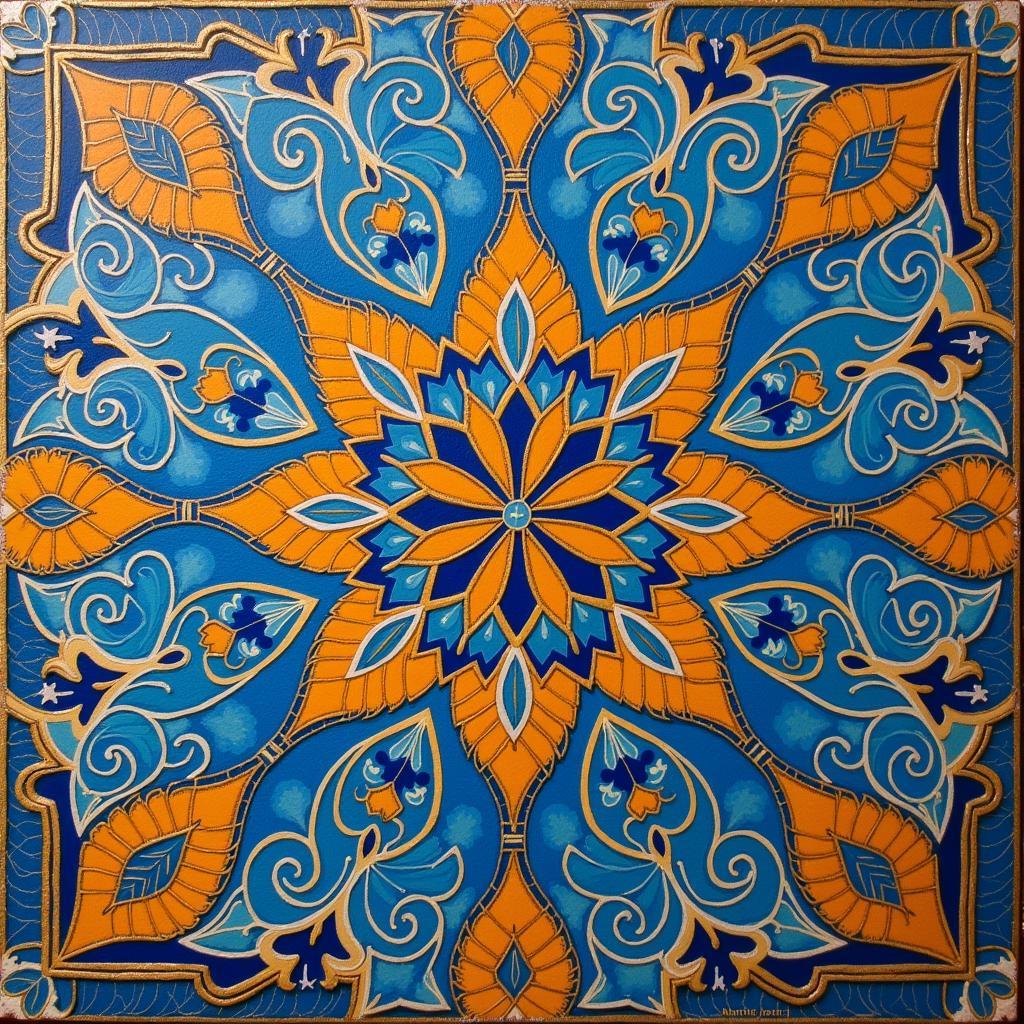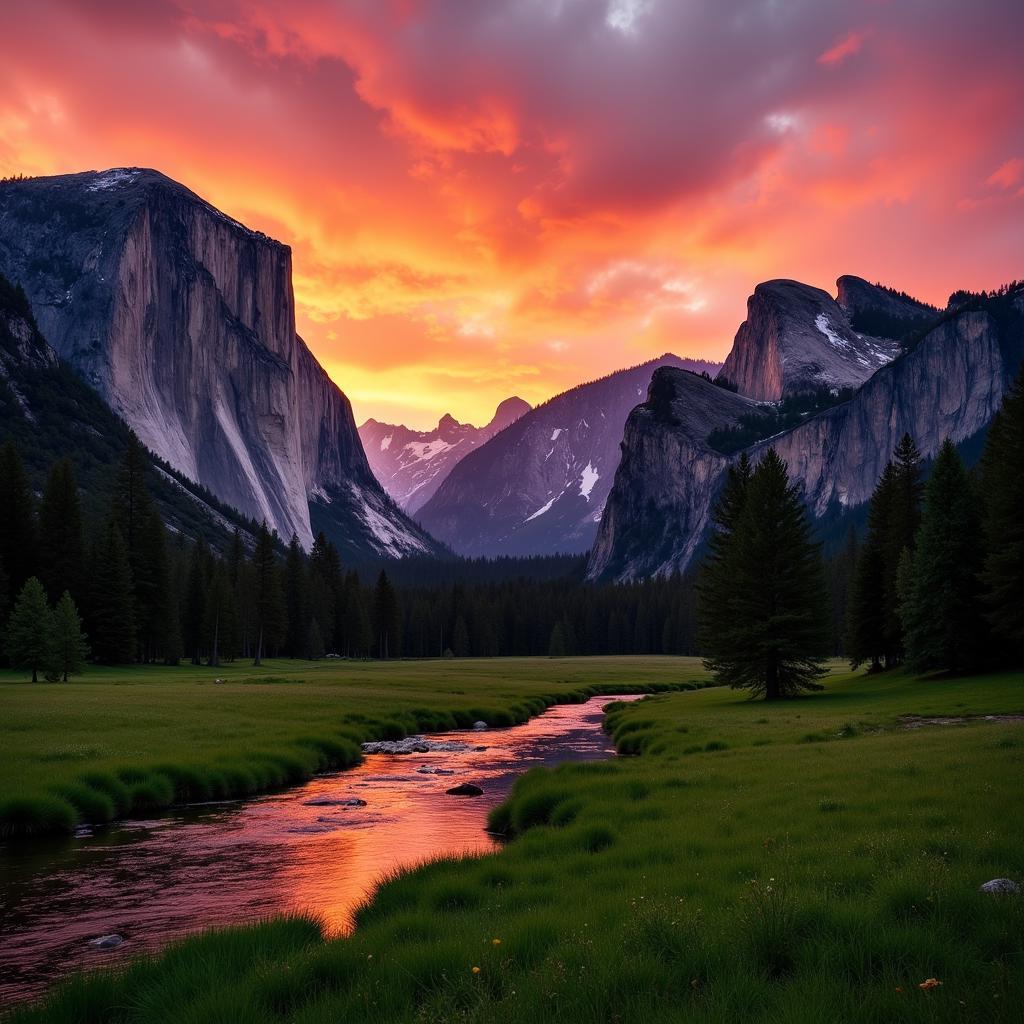Discovering the Ancient Art of Dhokra: A Journey into Tribal Metalcraft
Dhokra Art, a captivating form of metal casting, has been practiced in India for over 4,000 years. This ancient art form, passed down through generations of tribal artisans, continues to fascinate with its unique process and intricate detailing. Let’s delve into the fascinating world of Dhokra, exploring its history, techniques, and enduring appeal.
Unveiling the Secrets of Dhokra Casting
Dhokra art is a non-ferrous metal casting technique using the lost-wax method. The process begins with creating a clay core, often shaped like an animal or deity, which is then coated with beeswax. Intricate designs are carved into the wax, forming the final details of the piece. This wax model is then encased in clay, leaving a small channel for pouring molten metal. Once the clay dries, the wax is melted out, leaving a hollow mold. Molten metal, typically brass or bronze, is poured into the cavity, taking the shape of the original wax model. After cooling, the outer clay layer is broken, revealing the stunning metal sculpture.
The History and Cultural Significance of Dhokra Art
Dhokra art has its roots in the Indus Valley Civilization. The name “Dhokra” comes from the nomadic Dhokra Damar tribes of West Bengal and Odisha, who are renowned for their mastery of this craft. However, variations of the technique can be found across India, with each region having its own distinct style and motifs. Dhokra sculptures often depict deities, animals, and scenes from daily life, reflecting the cultural beliefs and traditions of the artisans. These pieces are not just decorative objects; they hold cultural and religious significance within the communities that create them.
Exploring the Intricacies of Dhokra Designs
Dhokra art is admired for its intricate details and rustic charm. The lost-wax process allows for a remarkable level of detail, with artisans skillfully crafting elaborate patterns and textures on the wax model. The use of non-ferrous metals like brass and bronze gives Dhokra pieces a warm, earthy tone that enhances their timeless appeal. From tribal deities to stylized animals, the designs are a testament to the artistic vision and patience of the Dhokra artisans.
Dhokra Art in the Modern World
While rooted in ancient traditions, Dhokra art continues to evolve in the contemporary world. Artisans are experimenting with new designs and incorporating modern elements while staying true to the core principles of the craft. Dhokra pieces are now finding their place in homes and galleries around the world, showcasing the beauty and craftsmanship of this ancient art form to a global audience.
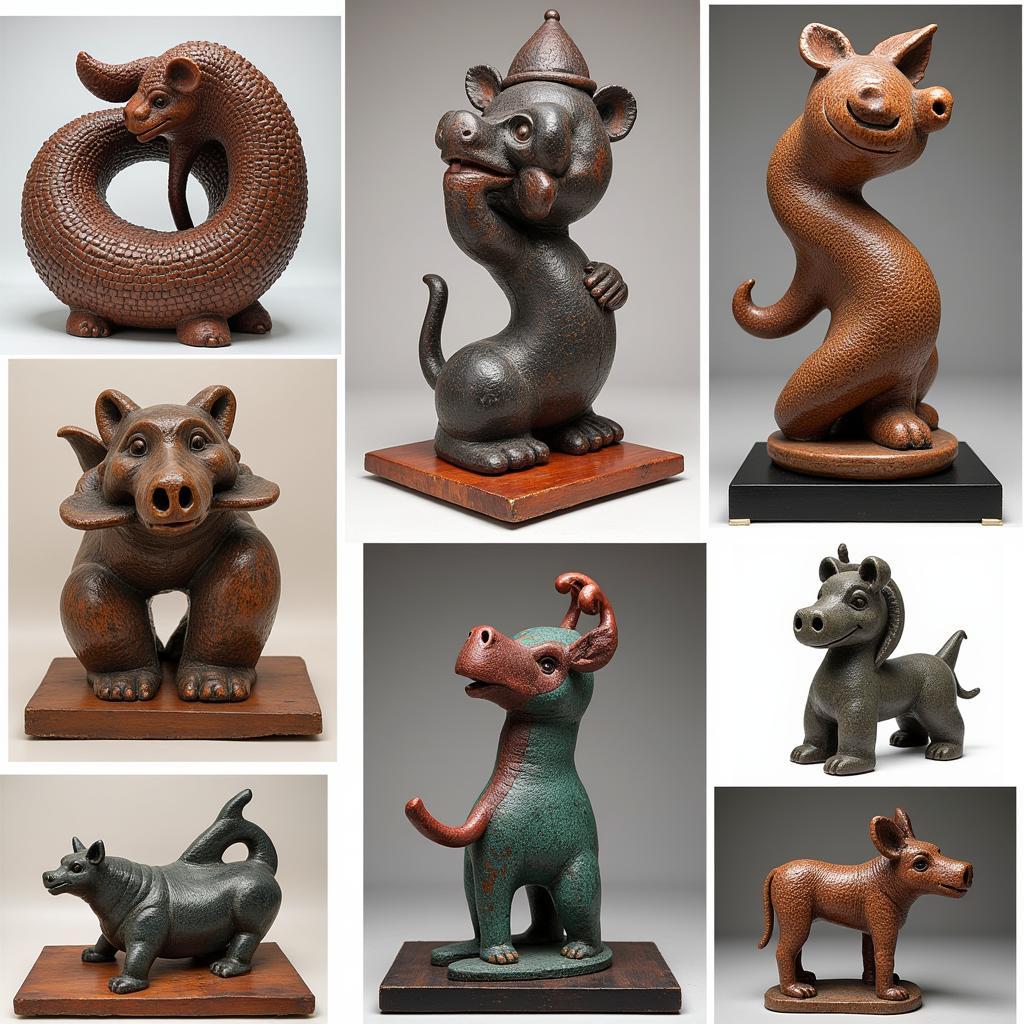 Modern Dhokra Art Sculptures: Showcasing contemporary Dhokra artworks, featuring innovative designs and unique interpretations of traditional motifs.
Modern Dhokra Art Sculptures: Showcasing contemporary Dhokra artworks, featuring innovative designs and unique interpretations of traditional motifs.
What makes Dhokra art unique?
Dhokra art’s unique process, involving the lost-wax casting method, results in one-of-a-kind pieces. No two Dhokra sculptures are ever exactly alike, adding to their allure and value. The intricate detailing, rustic finish, and the use of non-ferrous metals create a distinct aesthetic that sets Dhokra art apart.
“Dhokra art is not merely a craft; it’s a living heritage, a testament to the artistic ingenuity of generations of tribal artisans.” – Anika Sharma, Art Historian.
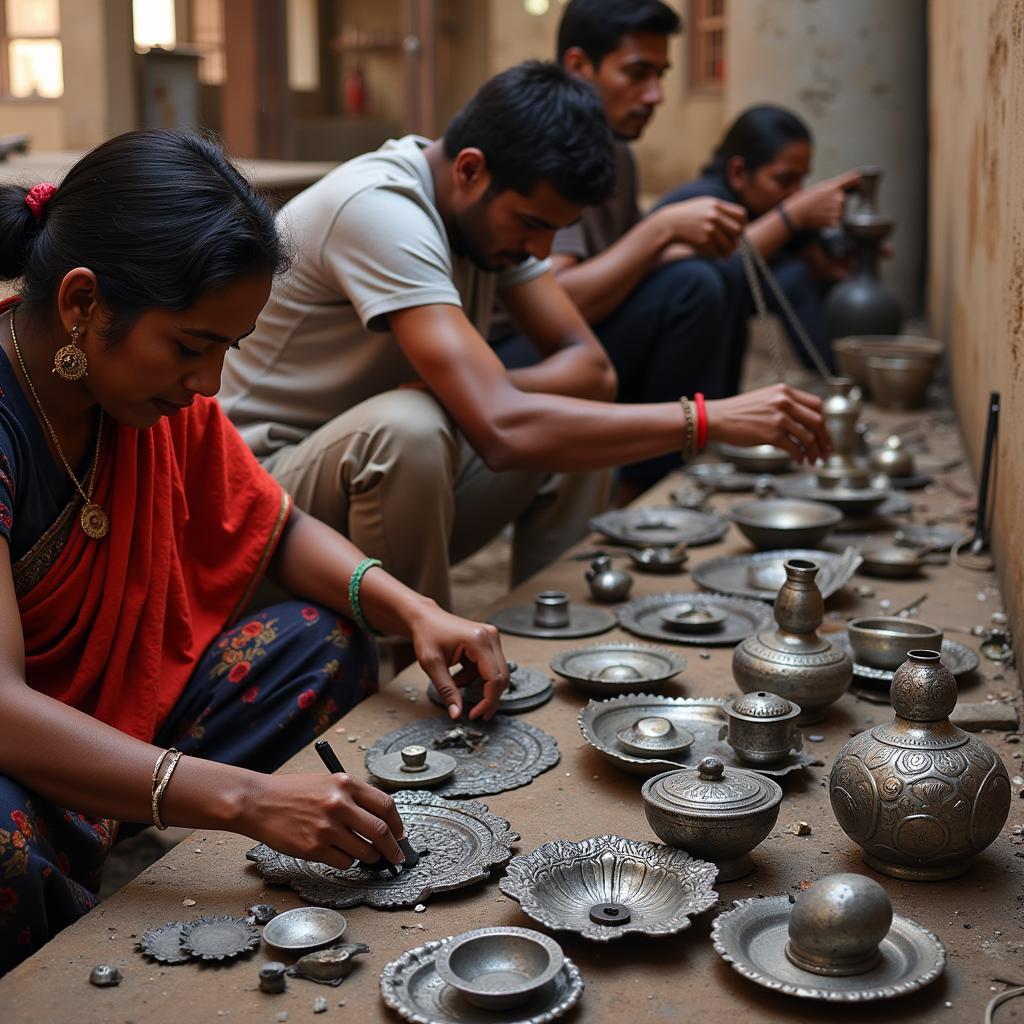 Dhokra Tribal Artisans at Work: A captivating scene of Dhokra artisans practicing their craft, showcasing their skills and dedication.
Dhokra Tribal Artisans at Work: A captivating scene of Dhokra artisans practicing their craft, showcasing their skills and dedication.
How can I identify authentic Dhokra art?
Authentic Dhokra pieces typically have a slightly rough texture and a warm, earthy tone. Look for intricate detailing and slight imperfections, which are inherent to the handmade process. Purchasing directly from artisans or reputable sources is the best way to ensure authenticity.
“Each Dhokra piece tells a story, whispering tales of ancient traditions and artistic passion.” – Rajan Gupta, Tribal Art Curator.
Conclusion: Embracing the Timeless Beauty of Dhokra
Dhokra art, with its rich history and intricate craftsmanship, continues to captivate art enthusiasts worldwide. From ancient rituals to modern-day homes, these unique metal sculptures hold a timeless appeal. By appreciating and supporting Dhokra art, we contribute to the preservation of a vibrant cultural heritage.
FAQ
- What is Dhokra art made of? Dhokra art is typically made of non-ferrous metals like brass and bronze.
- Where does Dhokra art originate? Dhokra art originates from the tribal communities of India, with the Dhokra Damar tribes being particularly renowned for their skill.
- How is Dhokra art made? Dhokra art is made using the lost-wax casting method, a unique and intricate process.
- Is Dhokra art expensive? The price of Dhokra art varies depending on the size, complexity, and the artist’s reputation.
- Where can I buy Dhokra art? You can purchase Dhokra art directly from artisans, craft fairs, or reputable online stores.
- What are some common Dhokra art motifs? Common Dhokra art motifs include deities, animals, and scenes from daily tribal life.
- How do I care for Dhokra art? Dust regularly with a soft cloth. Avoid harsh chemicals and abrasive cleaners.
Need support? Contact us at Phone: 02462573573, Email: [email protected] Or visit us at Savico Megamall, 7-9 Đ. Nguyễn Văn Linh, Gia Thụy, Long Biên, Hà Nội 10000, Việt Nam. We have a 24/7 customer support team.
